Shaping of the Rupture and Fault Zone Observatory

Community efforts continued this fall to hone the concept and design of the Rupture and Fault Zone Observatory (RuFZO), also known as the Near-Fault Observatory. RuFZO aims to collect geophysical and geological data within fault rupture zones of significant earthquakes, advance understanding of earthquake physics and characterization of near-fault regions, and refine estimates of seismic hazard. Several proposals and projects are underway globally, and RuFZO is targeting plate-boundary faults in California. At this time RuFZO is in a collaborative, community building phase facilitated by SCEC and the EarthScope Consortium (formerly IRIS and UNAVCO).
The discussions generated at the April 2021 online workshop, special interest group meeting at the 2021 SAGE/GAGE Workshop, and the 2021 AGU town hall, prompted additional focused virtual breakout sessions in October 2022 that are described here. These open events allowed presenters and attendees to discuss key topics regarding details of fault zone behaviors and the necessary observations for pushing forward our understanding of earthquake rupture. Each event was held in Zoom Meeting mode and consisted of a few brief presentations, time for questions and discussion, and a follow up report by the conveners to summarize main points raised during the session. Four virtual breakout sessions were held and are summarized below, with additional sessions planned for the spring of 2023. Participation was appreciable, with a good range in career stage and institutional affiliation as evidenced in the figures below, as well as a sustaining number of newcomers in the later breakout sessions. These efforts along with research priorities identified in community documents like the A Vision For NSF Earth Sciences 2020-2030: Earth in Time (CORES report) will guide the next steps of the overall RuFZO effort.
October 2023 Virtual BreakOut Session Summaries
 |
| All breakout sessions were recorded and are available at this YouTube playlist. |
Spatial Variations of Rock Properties and Deformation Processes Across Rupture Zones Breakout Session (October 6)
Convenors: Ashley Griffith and Ramon Arrowsmith
Presenters: Josie Nevitt (USGS Earthquake Science Center), Alba M. Rodríguez Padilla (University of California Davis), and Chelsea Scott (Arizona State University
To make a quantum leap in understanding, you need a quantum leap in observations. This sums up this breakout session on spatial variations of rock properties and deformation processes. Whether this leap is successfully landed or not depends on how well the research questions are articulated and from authentic community engagement. Keeping to an achievable scope will be necessary, but such an observatory will need to target a range in fault maturity, both creeping and non-creeping fault segments, modeling of the near fault environment, and pre-, co-, and post-seismic observations.
Josie Nevitt emphasized the importance of collecting near-field observations, including geological characterization and shallow seismic velocities, at all stages of the rupture: before, during and after events. It is only with this full view of slip behavior that the relationship between rock properties and deformation processes can be understood. For addressing research targets of interest, Alba Rodriguez Padilla outlined the need to cover both bedrock and sediment, extend to longer wavelengths (up to 3 km in some areas), and camera angles that allow for image differencing. Clear nomenclature should be established for rock properties. Chelsea Scott brought it back to the pre and post rupture picture, emphasizing again that the observations before are essential. Topography surveys via airborne lidar and high resolution drone coverage should be repeated every few years to capture solid pre-event conditions with good georeferencing. Post-event surveys should also be repeated, with plans to continue on a monthly interval to capture any postseismic transients. UAS (unmanned aerial system) housed locally could enable a more rapid response for this surveying. Lofted dust from mainshocks and aftershocks can interfere with airborne surveys and other optical imaging. Additional observations were suggested including leveraging robotic systems, fiber optic sensing, high rate cameras for indicators of ground motion that would include standard discs of known mass and size for benchmarks, as well as gas collection both on and off fault for distinguishing sources.
Subsurface Fault Zone Structure Breakout Session (October 13)
Convenors: Pieter-Ewald Share and Frank Vernon
Presenters: Elizabeth Cochran (USGS), Ellis Vavra (UCSD), and Nate Onderdonk (CSULB)
Characterization and monitoring of structural properties within fault zones that are prone to large earthquake ruptures are key in our drive to understand better the physics and behavior of these systems. This session started with three speakers focussing broadly on this topic but doing so from a different depth and scale of focus and using different methodologies in geophysics and geology.
Elizabeth Cochran focussed on the application of modern-day seismological tools to image and monitor high-resolution fault zone complexities within the seismogenic crust. This type of imaging can be dramatically improved with focussed near fault seismic arrays, such as the ones envisioned through RuFZO, capturing perishable signals only observable near or within fault zones, and complementing existing seismic network data in California. Aseismic signals, such as those generated by shallow creep along the southernmost San Andreas fault, and their analysis to inform the shallow structure and geometry of that fault was the topic discussed by Ellis Vavra. As emphasized in their presentation, near-fault focussed geodetic arrays are not the norm at present but can and should be incorporated to uniquely inform the internal fault zone features playing key roles in aseismic behavior (in the uppermost and ductile crust) along numerous faults in California. Finally, a more geologic and paleoseismic perspective on fault zone complexities very near the surface was provided by Nate Onderdonk. Nate’s insights provided a potential guide to where to densify the proposed RuFZO across-fault arrays and where to omit them. This suggested non-uniform distribution of arrays was driven mostly by the paleoseismic record and mapped near-surface fault complexities. For example, given the low likelihood of a future moderate to large rupture along the Elsinore fault, the RuFZO community may decide not to instrument that fault at the same level as other more hazardous faults. In contrast, poorly known and understood earthquake rupture behaviors across complex faulted regions such as the Hemet stepover or Cajon Pass should motivate more densely spaced (~10 km) RuFZO arrays at those locations.
Earthquake Ground Motions Around Faults Breakout Session (October 27)
Convenors: Gail Atkinson and Jamie Steidl
Presenters: Ken Hudnut (SCE), Greg Lavrentiadis (UCLA), Norm Abrahamson (Berkeley), Annemarie Baltay (USGS), and Albert Kottke (PGE)
The relative lack of near-source ground motion observations, in particular for large magnitude earthquakes for use in engineering ground motion models, provides one important justification for developing RuFZO along the main active faults in California. This webinar was aimed at getting input from the research and practicing engineering seismology community. There were 5 short presentations followed by a robust discussion.
Ken Hudnut kicked off the presenters discussing the needs for RuFZO from the perspective of how best to observe near-fault ground motion and large displacements, the implications for utility substations and opportunities for collaboration with the Southern California Edison resiliency program. There was also discussion of using rotational sensors and 6-Degrees of Freedom observations to separate rotational signals not being observed by traditional sensors, but having an influence on the data being produced by traditional sensors. Greg Lavrentiadis discussed the implications that RuFZO would have on non-ergodic Ground Motion Models (GMMs), and in particular the ability to reduce uncertainties in GMMs which has the potential for reducing ground-motion design values in engineering. This presentation, and in fact all the presentations led to discussions of the spatial design of the RuFZO arrays. Norm Abrahamson continued on from Greg with a discussion of non-ergodic models and how they might provide fundamental science questions about source behavior with respect to small/moderate vs. large magnitude events. The dense sampling of RuFZO data would also be helpful for validating 3-D simulations at high frequency. In particular, Norm pointed out that while waiting for large events, the smaller events could be used to get at 3-D crustal structure and path effect variability at short distances. Annemarie Baltay gave a presentation highlighting how small earthquakes provided by the RuFZO could provide the dense ray paths for getting at 3-D crustal structure, velocity and attenuation properties surrounding the fault, and demonstrated large (10s of kms) and small scale (10s of meters) examples of this. Annemarie also showed how the lack of near-fault observations may be masking potential correlations of event terms and stress drops with aftershocks and mainshock slip patterns. This issue may also produce a bias in the overall source term. In the last presentation, Albert Kottke discussed the science questions not answered today from the utility hazard perspective. The earthquake cycle is poorly understood. What makes faults turn on and off in time? How does the fault zone complexity contribute to this, and to the observed ground motions? Albert also discussed the lack of ground motions from large earthquakes within 10km, yet many facilities are located close to faults and even across faults.
Following the presentations there was considerable discussion of multi-scale necessity of the RuFZO design, with some off-fault arrays, and variable length and density of station spacing required to address the various scientific questions that need to be answered. Brad Aagard and Art Frankel provided some insights on these ideas.
Rupture Dynamics and Earthquake Source Properties Breakout Session (October 28)
Convenors: Ahmed Elbanna and Daniel Trugman
Presenters: Alice Agnes-Gabriel (UCSD) and David Shelly (USGS)
There is an obvious need for near-field observations to address the most pressing research questions for earthquake science and dynamic rupture processes. However, those near-field observations must still be contained within a broader holistic view of the fault zone, particularly for slip at depth. A wide range of instrumentation deployed in different environments will help move the needle past previous observational efforts, including the use of DAS and borehole sensors. Though there are major costs associated with these technologies, the community-scale observatory would be expected to include them in consideration.
Alice Gabriel presented multi-scale observations integrated into three dimensional earthquake rupture dynamics modeling. Some of the necessary observations include high-frequency and rock-damage-generating signals captured via high-rate GNSS, strainmeters, and strong motion sensors along with traditional seismic sensors. These should focus on the near-fault but it was noted that off-fault observations are also important for establishing the broader context and for capturing additional signals of interest. Capturing signals at depth was also emphasized, noting that borehole measurements balance cost with less attenuation and closer proximity to the source. David Shelly took the perspective back to the Parkfield-era, drawing out the lessons learned from that experiment and how they can be applied to an observatory in the current era with new technologies like DAS. In addition to what can be learned from past observatories, there is also a need to pull together past focal mechanism and moment tensor catalogs into the most complete picture of the background stress field prior to the targeted rupture or ruptures.
Characteristics of Breakout Session Participants
 |
| Responses from attendees of October 2022 virtual breakout sessions by career stage, institution type, and their prior involvement in RuFZO/Near-Fault activities. |
Future Events
Virtual breakout sessions for the RuFZO effort will continue in 2023, covering topics from on- and off-fault inelastic slip, distributed sensing of earthquake rupture, and engaging next generation researchers and training of the next generation workforce. Announcements will continue to be made through the SCEC and EarthScope mailing lists. For more information about these events or to get more involved, please visit www.iris.edu/hq/initiatives/near_fault. We also welcome proposals for additional virtual breakout sessions and other feedback via this form.
About the Authors
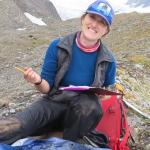 |
Kasey Aderhold is a Project Manager at the EarthScope Consortium, where she works on a variety of instrumentation projects and programs |
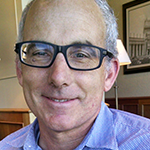 |
Ramon Arrowsmith is a Professor at Arizona State University where he studies the earthquake geology, paleoseismology, and geomorphology of fault zones and publishes about their history of activity and hazards. He is currently co-leader of the SAFS element on the SCEC Planning Committee, and is the cofounder and co-PI of the OpenTopography effort—a portal to the largest collection of freely available high resolution topography data (http://www.opentopography.org/). |
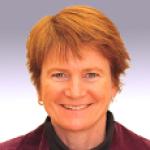 |
Gail Atkinson is a Professor Emeritus at Western University, Canada, who conducts research at the engineering-seismology interface. She specializes in seismic hazards and ground motions, with a focus over the past decade on hazards due to induced seismicity. In 2021 she was recognized with the Harry Fielding Reid Medal of the Seismological Society of America, awarded for outstanding career contributions to seismology. |
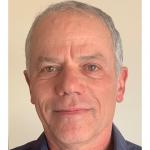 |
Yehuda Ben-Zion is the Director of SCEC and Professor of Earth Sciences at the University of Southern California. Current interests include localization of deformation, high-resolution imaging of fault zones and the crust, earthquake source properties, detection of small events, anatomy of the ambient seismic noise, dynamic ruptures in geologically-relevant structures, damage rheology for brittle deformation, spatio-temporal seismicity patterns, and earthquake forecasting. |
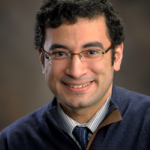 |
Ahmed Elbanna is an Associate Professor of Civil and Environmental Engineering at the University of Illinois at Urbana-Champaign and leads the Mechanics of Complex Systems Laboratory. Elbanna's research focuses on problems in theoretical and applied mechanics of solids, in the presence and absence of pore fluids, with special emphasis on fracture, deformation and wave propagation problems as they arise in geophysics, biological materials, and material design. |
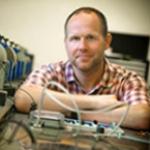 |
W. Ashley Griffith is an Associate Professor in the School of Earth Sciences at Ohio State University. His expertise is in Structural Geology and Geomechanics, with a focus on the development and dynamic behavior of brittle structures in rocks through geological field observations, experimental rock and fracture mechanics, and continuum mechanical models. He has been co-Lead in Earthquake Geology on the Science Planning Committee at SCEC since 2019. |
 |
Pieter-Ewald Share is an Assistant Professor at Oregon State University, whose research uses multi-scale multi-geophysical tools to inform properties and processes along the western North American plate boundary. His group is especially interested in combining geology, seismology, electrical/electromagnetic methods and geodesy to achieve a more holistic understanding of plate boundary geohazards and their societal impact. |
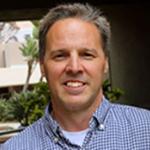 |
Jamie Steidl is a Research Seismologist at the University of California, Santa Barbara’s Earth Research Institute, and an adjunct Professor in the Earth Science department. Currently, Dr. Steidl leads the UCSB Geotechnical Array facilities, which provide the observational case histories from earthquakes that will allow for improvements in our ability to predict ground shaking from future earthquakes, including non-linear soil behavior, soil-foundation-structure interaction, and liquefaction. |
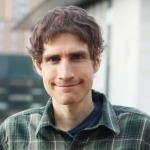 |
Daniel Trugman is an Assistant Professor at the University of Nevada Reno, where he focuses on developing and applying new techniques to analyze large seismic datasets in order to better understand earthquake rupture processes and their links to earthquake hazards. He is broadly interested in making advances in field of earthquake science by leveraging concepts from big data and scientific machine learning alongside high-fidelity physical models. |
 |
Frank Vernon is a Research Geophysicist at UCSD, whose research interests are focused on developing distributed networked real-time sensor networks in terrestrial and marine environments. Currently he is the Director for the USArray Array Network Facility for the NSF EarthScope program. This network currently has over 500 stations using seismic, acoustic, and atmospheric pressure sensors delivering real-time data to UCSD, which are redistributed to multiple sites. |
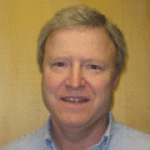 |
Bob Woodward is s president of the Incorporated Research Institutions for Seismology(IRIS) where he leads the operation of facilities to support geophysical research, with an emphasis on seismology. Prior to becoming president of IRIS he was director of the USArray program and served as the director of Instrumentation Services at IRIS. Woodward is also a member of the SCEC Advisory Council. |



